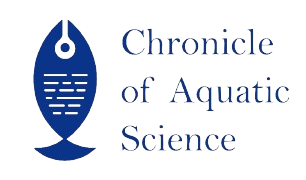| File | Action |
|---|---|
| CoAS_V1IS8_04 | Download |
- 919088951040 call us
- chronicleofaquaticscience@gmail.com Mail us
CoAS_V1IS8_04
Original Research
Differentiating the Economics, Profitability, Growth performance and Viability of Litopenaeus vannamei, in a newly designed system titled Semi-Recirculating Aquaculture system with the Conventional Normal Biofloc System
Priya Maria Vinesh* and Arun Das N H
Abstract
This research compares a traditional Biofloc system to a Semi Recirculatory Aquaculture Biofloc system. The latter like the conventional Biofloc system, follows the same culture pattern, with the exception of a recirculatory mechanism integrated into the culture process, which could cause considerable differences. For this study, we chose two farms in Kerala's Ernakulam district: Kodungaloor and Aroor, which use Semi-RAS and normal Biofloc systems, respectively. Water quality indicators, cultured species productivity, 70-day FCR ratios, disease frequency, feed intake intensity, TSS and TDS, feed digestibility, investment, and profit percent in both culture farms were examined from day one to day thirty. Dissolved oxygen levels were 7 ppm and 5 ppm, ammonia levels were 0 ppm and 1 ppm, TDS-TSS levels were 50-100 ppm and >200 ppm in Semi RAS and biofloc systems, respectively. On the 30th day of the culture phase, according to the data, Semi-RAS yielded 3.6kg/m3, while biofloc yielded 1.6kg/m3. Stress and microbial contamination were reduced in Semi RAS, while digestibility increased. Although the Semi RAS system costs more than Biofloc, farmers that use it can earn three times as much and have a greater profit percentage. According to our findings, Semi RAS technology offers aquaculture farmers more possibilities.
Keywords
Semi RAS system, Biofloc, Water quality, Aquatic Health, Litopenaeus vannamei, Digestibility.
References
Lightner, D. V. (2011). Status of shrimp diseases and advances in shrimp health management. Diseases in Asian Aquaculture VII. Fish Health Section, Asian Fisheries Society, Selangor, Malaysia, 121-134.
Kalaimani, N., Ravisankar, T., Chakravarthy, N., Raja, S., Santiago, T. C., & Ponniah, A. G. (2013). Economic losses due to disease incidences in shrimp farms of India.
Avnimelech, Y. (2009). Biofloc technology. A practical guide book. The World Aquaculture Society, Baton Rouge, 182.
Xu, W. J., Morris, T. C., & Samocha, T. M. (2016). Effects of C/N ratio on biofloc development, water quality, and performance of Litopenaeus vannamei juveniles in a biofloc-based, high-density, zero-exchange, outdoor tank system. Aquaculture, 453, 169-175.
Khanjani, M. H., & Sharifinia, M. (2020). Biofloc technology as a promising tool to improve aquaculture production. Reviews in aquaculture, 12(3), 1836-1850.
Emerenciano, M. G. C., Martínez-Córdova, L. R., Martínez-Porchas, M., & Miranda-Baeza, A. (2017). Biofloc technology (BFT): a tool for water quality management in aquaculture. Water quality, 5, 92-109.
https://jay-jayaqua.business.site/?utm_source=gmb&utm_medium=referral
Crab, R., Defoirdt, T., Bossier, P., & Verstraete, W. (2012). Biofloc technology in aquaculture: beneficial effects and future challenges. Aquaculture, 356, 351-356.
Li, C., Liang, J., Lin, X., Xu, H., Tadda, M. A., Lan, L., & Liu, D. (2019). Fast start-up strategies of MBBR for mariculture wastewater treatment. Journal of environmental management, 248, 109267.
- Published online
- 19th January, 2024
How to Cite the Article
Vinesh P. M. and Das, A. N. H. 2024. Differentiating the Economics, Profitability, Growth performance and Viability of Litopenaeus vannamei, in a newly designed system titled Semi-Recirculating Aquaculture system with the Conventional Normal Biofloc System. Chronicle of Aquatic Science 1(8): 24-34
Copyright
This is an open-access article distributed under the terms of the Creative Commons Attribution License (CC BY). The use, distribution or reproduction in other forums is permitted, provided the original author(s) and the copyright owner(s) are credited and that the original publication in this journal is cited, in accordance with accepted academic practice. No use, distribution or reproduction is permitted which does not comply with these terms.

CoAS_V1IS8_04


